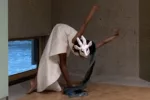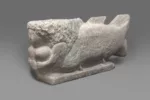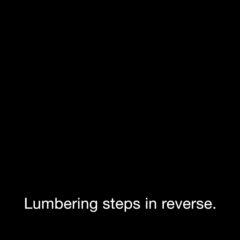With two world premieres and an East Coast premiere, BalletX’s Spring Series is ambitious, displaying a diversity of styles that really showcases the phenomenal talent of these dancers company. Also known for nurturing the work of young choreographers, with their Choreographic Fellowship, the BalletX Spring program (which ended March 17 at The Wilma Theater) included “Off the Canvas,” a Cy Twombly-inspired dance by 2019 fellow Katarzyna Skarpetowska. Each of the three pieces differed pretty dramatically, but intermissions after each act helped cleanse the audience’s palate and prepare us for the next offering. While my overall response was mixed, they definitely saved the best for last, and I left the Wilma walking — if not quite dancing — on air.
Inspired by the “vermilion loops” of Cy Twombly’s Bacchus series of paintings, “Off the Canvas” takes its art history seriously. The curtain opens on a blank canvas stretched across the stage floor, making the connection between painting and performance absolutely explicit. The dancers enter, dressed in white or red costumes that are accentuated with contrasting swoops of red or white, which look like painterly strokes. The dancers’ repetitive, circular motions evoke the looping motions of Twombly’s brush strokes. The troupe’s artistry and technical ability as they execute Skarpetowska’s kinetic re-imagining of Twombly’s work is truly impressive. However, I found myself torn between admiration for its technical execution and disappointment at lack of narrative and emotional content to draw me in. In her program notes, Skarpetowska refers to the ecstasy and mystery of Twombly’s Bacchus paintings, but the dancers’ rigid control and the repetitive structure of the dance were far from the Bacchic ecstasy and excess I was hoping for.
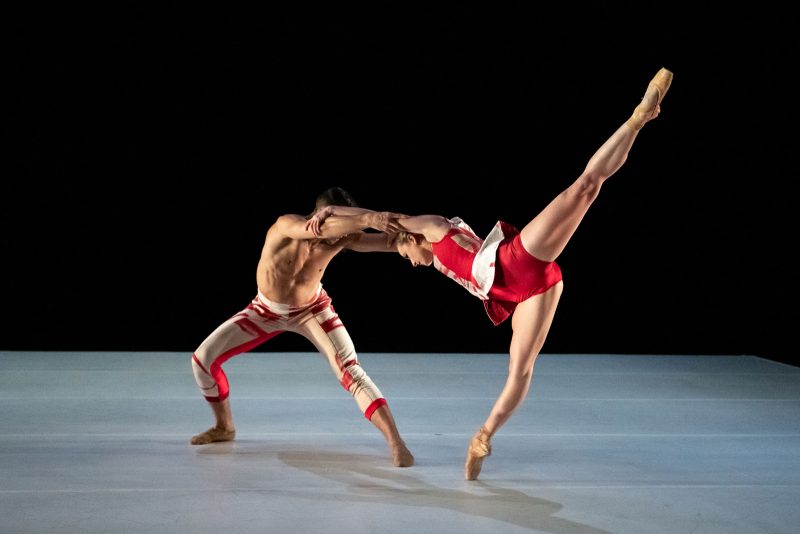
Twombly’s work has inspired some passionate responses off the stage as well as on, most famously in 2007 when a visitor (also an artist herself) to the Museum of Contemporary Art in Avignon placed a brilliant red lipstick kiss on the pristine blank whiteness of one of his canvases. Red and white, flesh and blood, dominate his Bacchus paintings, a series begun towards the end of the artist’s life in 2005. Monumental in scale, these paintings wear their mythological references on their sleeve. Pale flesh colored canvas is covered in giant loops of bright red paint. You can see how such a work would lend itself to interpretation through dance — there is an undeniably kinetic quality to the painting, foregrounding the physical movement of the body making the painting. Twombly heightened and exaggerated his own painterly gestures by attaching his paintbrush to a long pole in order to cover the enormous canvases. There is a tension between control and the lack of it in these paintings which I wish I had seen more of in Skarpetowska’s interpretation of Twombly.
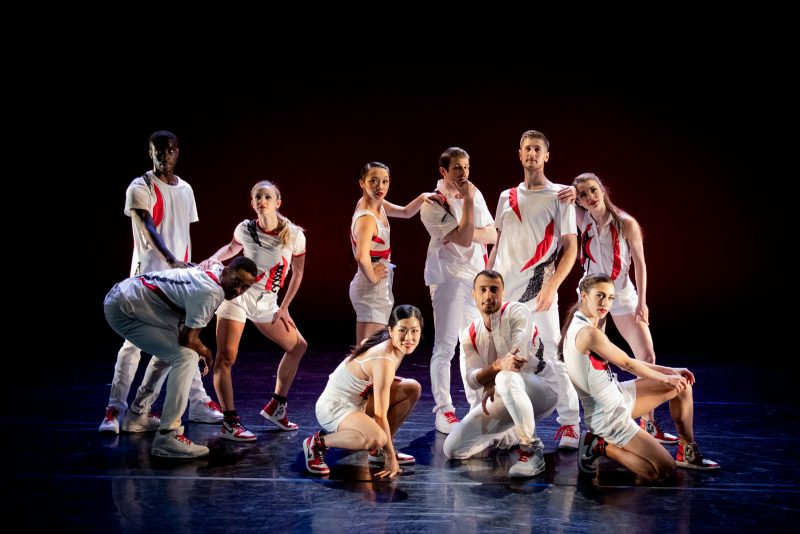
The middle of the program was punctuated by a more lighthearted, crowd-pleasing piece: “Express,” choreographed by Lil Buck with music by Jon Batiste and Stay Human. Lil Buck is a phenomenal performer, best known for his virtuoso approach to traditional Memphis jookin. I was unfamiliar with this dance style before the performance, and Express was an unusual introduction. Jookin is a social dance, expressive and often competitive among groups of dancers who try to outshine each other with increasingly difficult moves, including toe stops, jumps, and slides. Jookin is fun and looks spontaneous (even when it’s not), but it doesn’t seem to come so easily for the dancers of BalletX. With the exception of the outstanding Stanley Glover, who moved with a natural, fluid grace, the dancers seemed a bit stilted, like they were trying just a little bit too hard to be having fun. Most jarring to me was the fact that the women wore pointe shoes until the last of the four ‘acts’ of the dance, “Express Yourself (Say Yes).” As far as I can tell, jookin is usually performed in high-top sneakers, and I’ve seen dancers go “en pointe” in all sorts of funny, clever ways while wearing sneakers. I found the use of pointe shoes for the women to encapsulate my frustration with this piece, which at times came perilously close to gimmickry.
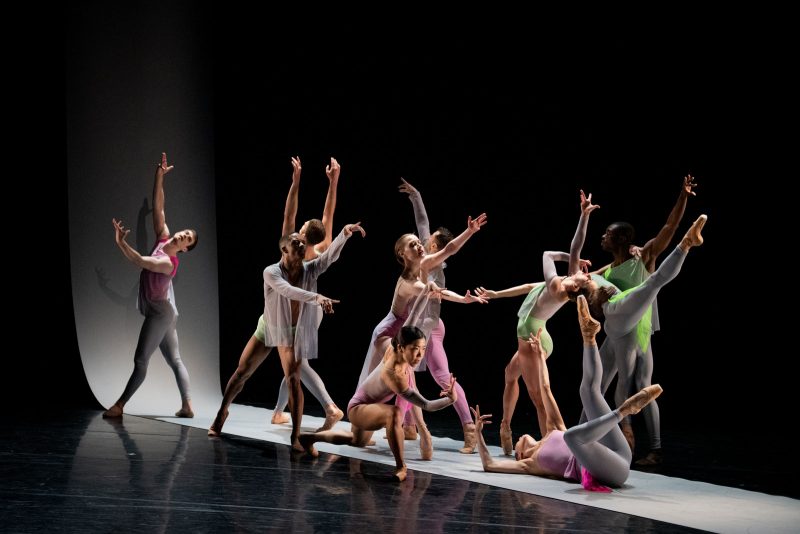
The Spring Series program closed with Nicolo Fonte’s “Steep Drop,” Euphoric, a gorgeous, emotionally rich piece. From the first moments, when a single dancer stands silhouetted against a long scroll of material, I was so caught up in the beauty and drama of what was taking place on stage it felt as though I was holding my breath. Fonte’s choreography effectively translates the inner movements of the mind into physical movement. It felt like we were watching a psychological drama play out among the dancers on stage. Rather than the deliberate symbolism of the first two numbers, more was left to the audience’s imagination here. For example, the dance was structured around a long scroll of fabric hanging from the ceiling in the back of the stage that was gradually unrolled diagonally across the stage throughout the piece. The dancers engaged with this scrolling material, alternately conforming to and rebelling against its boundaries. Throughout the piece, the lighting cast strong silhouettes against the scroll, creating a contrast between the dancers’ physical selves and shadow selves, between body and mind. While the atmospheric music by Ezio Bosso and Ólafur Arnalds enhanced the mystery and beauty of the dance, the choreography stood on its own, and I would have been just as enthralled watching the troupe dance in silence. Fonte shows that choreographers don’t need to rely on external factors like music or seek inspiration from other art forms to create compelling work that speaks to audiences.
Discover more about BalletX, and keep tabs on future shows here!


